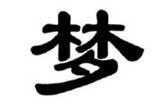Off with the fat, in with the fit
Updated: 2011-09-20 08:02
By Diane Nottle (China Daily)
|
|||||||||

An American teacher of English, who spent a semester in Hunan, discovers a surefire method to lose weight in what she calls the 'China Diet'. Diane Nottle reports.
Want to lose weight? I've discovered the ideal diet. You eat all you want, feel completely satisfied, and still shed kilograms. There's just one catch, the very first step. You have to move to China. I stumbled into "the China Diet" last year when I spent a semester teaching English in Hunan province. In less than five months, I dropped nearly 7 kg effortlessly.
Genetically predisposed to being more stocky than sylphlike, I've been weight-conscious most of my life. When I signed on for Hunan, the first thing everyone said was, "Oh, the food will be fabulous!"
I had adored Chinese food ever since my first dinner at Suzie Wong's restaurant in State College, Pennsylvania, circa 1973. After feasting on the real thing on a two-week tour of China in 1985, I brought back a few extra kilograms.
Not to worry, said Pamela Britnell, a colleague from New York who was starting her third semester in Hunan. "I always lose weight in China," she told me. "On the plane over, these jeans are tight, and when I come home" - she pulled her waistband out an inch - "they're like this."
Within weeks, my own waistbands were loosening. How does it happen?
It's not that we ate less in China; it's that we ate so differently. When in Xiangtan, do as the natives do. Of necessity I became a locavore, eating (to the best of my knowledge) foods grown just off campus and prepared according to local custom. That translated into far less meat than Americans normally eat; far more fresh fruit - sometimes four servings a day, rarely fewer than two - and vegetables; no bread, ergo no butter or other fattening spreads; next to no dairy; alcohol only occasionally; and rarely any sweets.
The reduced meat intake was by far the most difficult change; I felt empty and light-headed, especially the first month, until my body adjusted. Most Chinese dishes use meat more as a flavoring than the chief ingredient. It's also cut into much smaller pieces, generally with very little fat.
I was reluctant to order the skewered meats grilled at carts along the campus food street, since I didn't know what they were. For emergency snacks, I kept hard-boiled eggs in my refrigerator; later, from a store in Changsha, I added lean sliced ham resembling Canadian bacon. But the reduction in animal protein brought a corresponding reduction in animal fat.
China, like other Asian countries, does not have a dairy culture, so less dairy also meant less fat. Edible cheese was rare, but I got my fix in weekly visits to the surprisingly good local Pizza Hut.
The most common dairy product was yogurt - in small containers. Chinese ice cream seemed more like ice milk to someone who prefers butterfat content in the 13-to-17-percent range of super-premium brands such as Ben & Jerry's, so it wasn't even tempting.
Nor were the various yellow sponge cakes, and I deliberately stayed away from the candies that now line the checkout lanes of grocery stores. Chocolates were replaced with fresh fruits from the stand around the corner and the campus carts. They sold, in their seasons, first pineapple quarters on sticks, then fresh lychees by the bag, and later big wedges of watermelon and hami gua (a melon whose pulp looks like cantaloupe but is firmer and sweeter). Candied walnuts, with their burnt-sugar coating, were an occasional treat. A Coca-Cola now and then - real Coke, with sugar - did no harm.
Such changes put me on the right track, according to T. Colin Campbell, co-author of The China Study: Startling Implications for Diet, Weight Loss and Long-Term Health (BenBella Books, 2006). Campbell, a biochemist specializing in nutrition, reached "a defining moment" of her career when international studies suggested that protein-rich diets actually promoted disease. "This information countered everything I had been taught," he writes. "It was heretical to say that protein wasn't healthy." Campbell's subsequent study of nutrition and disease in 6,500 Chinese adults transformed him from a lifelong carnivore into a vegetarian. His advice: "Eat plants."
In China, eating plants was easy. Vegetables were indisputably fresh and cooked to perfection, that is, barely at all. I passed up salad greens, lacking dressing, but then I walked past a corner shop. "Salad bar!" I exclaimed. It was stocked with crisp sliced lotus root, eggplant strips, seaweed ribbons as thin as angel-hair pasta, various cold noodles, and the thin, crinkly tofu I love. All were tossed in a fiery dressing, heavy on chili oil and cilantro.
While teaching a class of Chinese students in New York this spring, one of my students Deng Yan explained that the same word - cai - came to mean both "vegetables" and "dish" because the Chinese traditionally had so little meat. During her childhood in northern China in the 1960s, she recalled, meat was scarce except during New Year celebrations.
The China Diet is the opposite of the Atkins Diet, which eschews carbohydrates in favor of meat, meat and more meat. In China, carbs remain the rule. Some days I had baozi (steamed buns) for breakfast, fried rice for lunch, and noodles or dumplings for dinner, but they burned right off.
In May, the New York Times columnist Mark Bittman noted that meat consumption in China is soaring. Bittman blames a "primal urge that screams, 'Listen, dummy, if you can find meat you'd better eat it, because who knows when you'll eat it again! "
Granted, factors other than food consumption helped make my China Diet a success. I lived in a fourth-floor walk-up, which meant several trips up and down most days. The apartment was more than 3 km from my classroom building; weather permitting, I walked one way each day. With no pool readily available, I replaced my regular swims with Pilates workouts from DVDs, which melted some of the fat. I probably also burned more calories just to stay warm in early spring, since classroom buildings in South China are unheated.
When I returned to the US, I declined bread and made a meal out of a single slice of pizza (which was, after all, the size of half a small one at Pizza Hut in Xiangtan). I chose fresh fruit for dessert. After nearly 18 months, I still haven't had a bagel with cream cheese.
Recently I had an e-mail exchange with my student Yummy in China. I asked her to "eat something wonderful for me".
She wrote back: "I didn't eat a lot because I'm trying to lose weight. Summer is here." A number of my female students thought they needed to lose weight. Some looked chubby in their winter clothes, but when spring came and they shed the layers, every single one became magically slender. Now they seem to be catching another disease of affluence: the distorted body images that plague Western women.
If only they'd stick to the China Diet.










